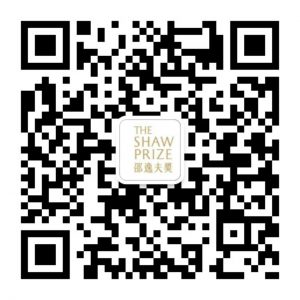Born on November 22 in Wesseling, near Cologne, my family relocated to Siegen when I was eight years old due to my father’s career as an engineer with the German railway system. My early education was at a grammar school with a focus on classical languages, where the natural sciences were considered of minor importance. My academic trajectory was uninspired until a motivating biology teacher suggested a project in plant ecology. I undertook a three-year study on the succession of plant communities following periodic deforestation, a traditional practice linked to local iron processing. This work, pursued with great enthusiasm, was published as a booklet upon my graduation and received several accolades, including winning the German Science Fair (‘Jugend forscht’). The success of this project solidified my conviction to pursue a scientific career in biology, a path my parents supported despite their doubts that it would ever earn me a living.
I enrolled at the University of Münster in 1966, where I took foundational courses in physics, chemistry, and biology. After a year, I transferred to the University of Bonn. It was there that my fascination with structural biology began when I discovered an abandoned electron microscope at the Institute of Agricultural Botany. I took the initiative to put it back into operation and taught myself the art of specimen preparation techniques. By the time I completed my diploma thesis, I recognized the need for professional training in EM-based structural studies to move beyond an amateur level. This led me to apply for a position at the Institute of Biophysics and Electron Microscopy at the University of Düsseldorf, under the supervision of Helmut Ruska. Helmut Ruska was a pioneer in applying electron microscopy to the biomedical sciences, and he was the first to visualize viruses and bacteria. He was the younger brother of Ernst Ruska, who received the 1986 Nobel Prize in Physics for his foundational work in developing the first electron microscope.
At the time I joined the Ruska laboratory, transmission electron microscopes had, in principle, reached a resolution allowing to image single heavy atoms. My assigned PhD task was to explore the use of heavy-atom labels for studying membrane topology. I began by preparing synthetic lipid layers, but these proved too unstable under the electron beam. I eventually succeeded in imaging an unusually radiation-resistant organometallic compound. Even though this work sailed easily into a top-tier journal, it had no lasting impact. It became clear that this avenue of research was a dead end, necessitating a change in direction.
The emerging field of electron crystallography offered a promising alternative, particularly inspired by work on the two-dimensional crystals of bacteriorhodopsin. This method circumvents the problem of radiation damage by averaging information from many identical copies within a repetitive structure, enabling the study of underexposed samples. My group successfully applied this approach to bacterial surface layers and refined image processing procedures to overcome the limitations of crystal imperfections. In 1982, this work led to an appointment at the Max-Planck-Institute of Biochemistry in Martinsried, where I succeeded Walter Hoppe, an X-ray crystallographer of remarkable originality and theoretical ability who had transitioned to electron microscopy.
In 1989, my laboratory began investigating the 20S proteasome, a large protein complex whose structure and subunit composition were then highly controversial. Our search for a more tractable model was successful; we identified a particle similar to the human proteasome in the archaeon Thermoplasma acidophilum. This discovery was instrumental in elucidating the structure and enzymatic mechanism of this critical protein degradation machine. We obtained a 3D model via cryo-EM single-particle analysis, followed by a high-resolution structure using X-ray crystallography. Combined with site-directed mutagenesis, this work revealed the proteasome’s long enigmatic active site, paving the way for the development of inhibitors, one of which became a potent drug for treating multiple myeloma.
The next major challenge was to understand the proteasome in its functional state, associated with regulatory complexes to form the multisubunit 26S holocomplex. The sheer complexity, dynamics, and lability of this assembly made it a daunting target for structural studies. This led us to believe that some of its mysteries could be better addressed by studying it in situ, within its functional cellular environment. Although electron tomography was a conceptual option, a great deal of skepticism existed amongst the practitioners of electron microscopy regarding its application to radiation-sensitive biological material embedded in vitreous ice.
The advent of computer-controlled microscopes and large-area CCD cameras in the late 1980s provided an opportunity to automate tomographic data acquisition. This automation was key to keeping the cumulative electron dose within tolerable limits. A turning point came in 2002 with our publication of tomograms from the periphery of a Dictyostelium cell, which clearly visualized the actin cytoskeleton with ribosomes and proteasomes nestled within. From there to where we are now has been a long journey. Many obstacles, from sample preparation to improved schemes of data acquisition and data processing, had to be overcome. Now, it is gratifying to see how many labs across the world have adopted this technology. Structural biology in situ by cryo-electron tomography now has a firm place in structural cell biology.
21 October 2025 Hong Kong
